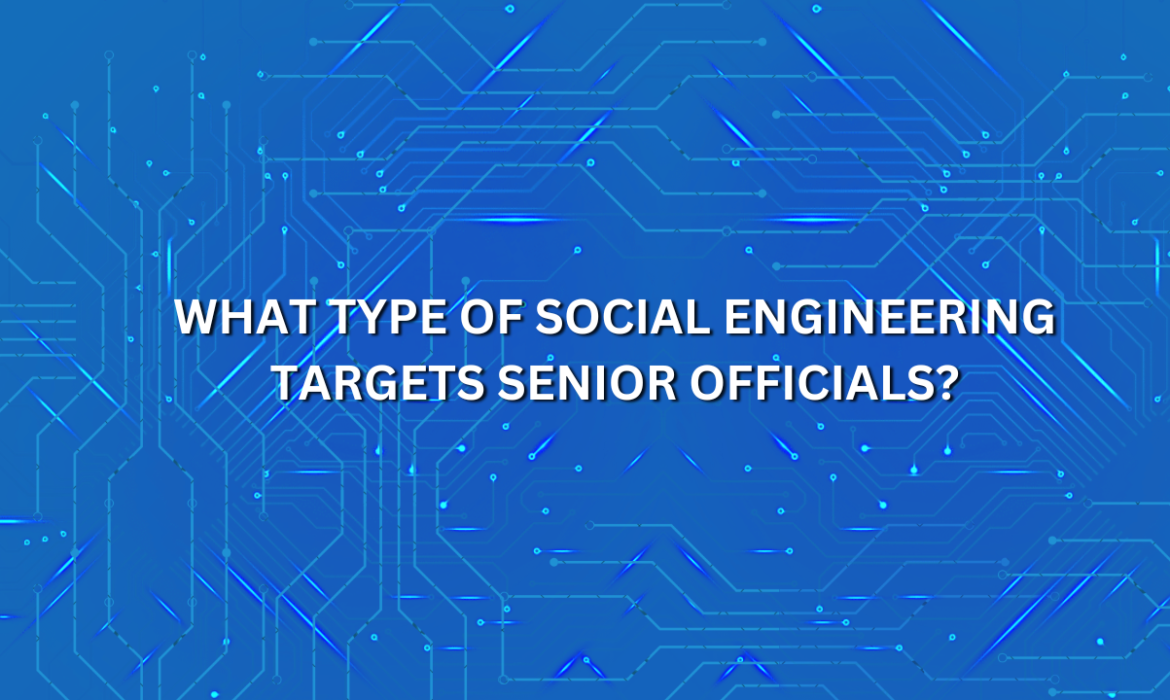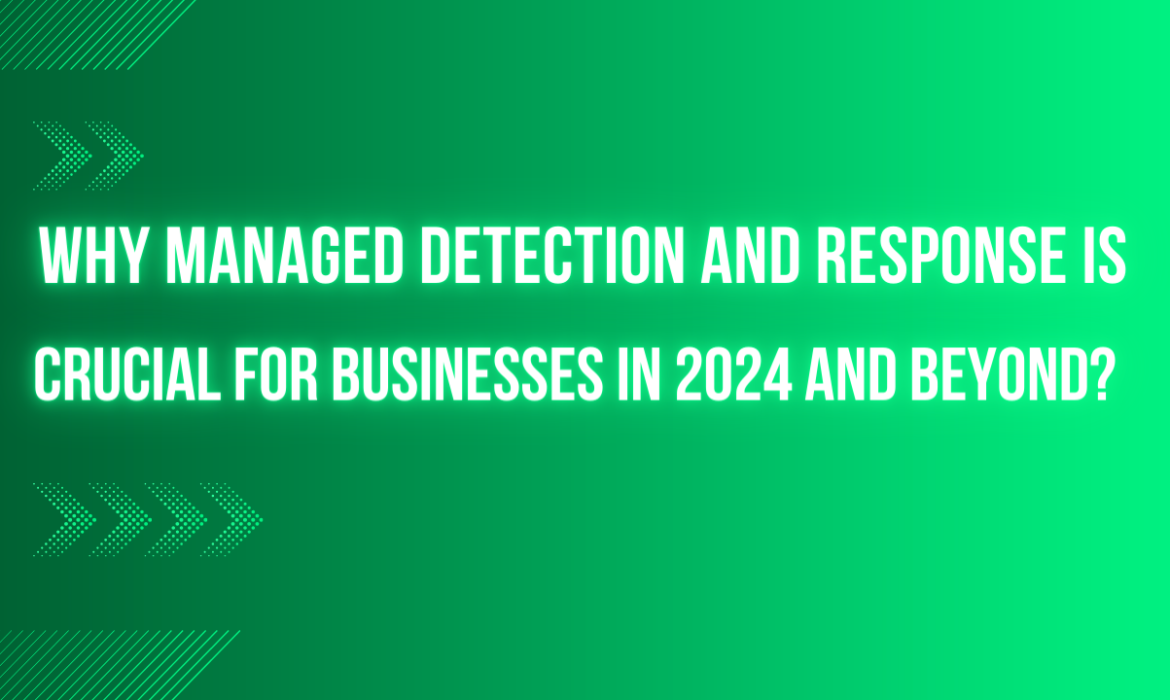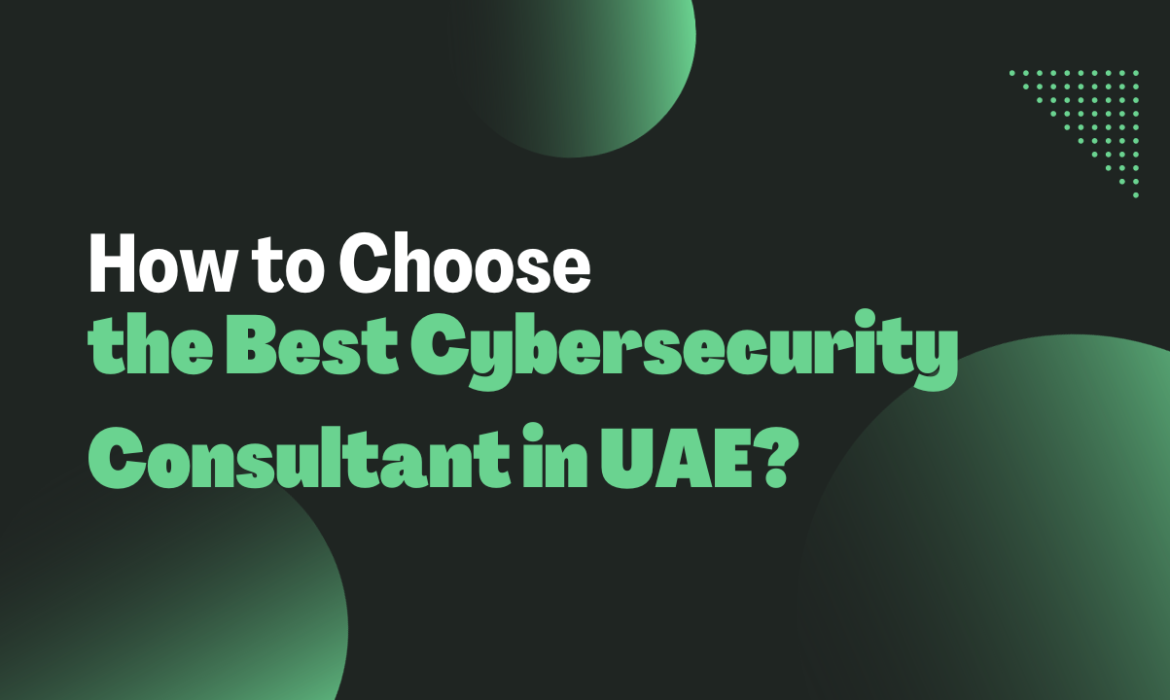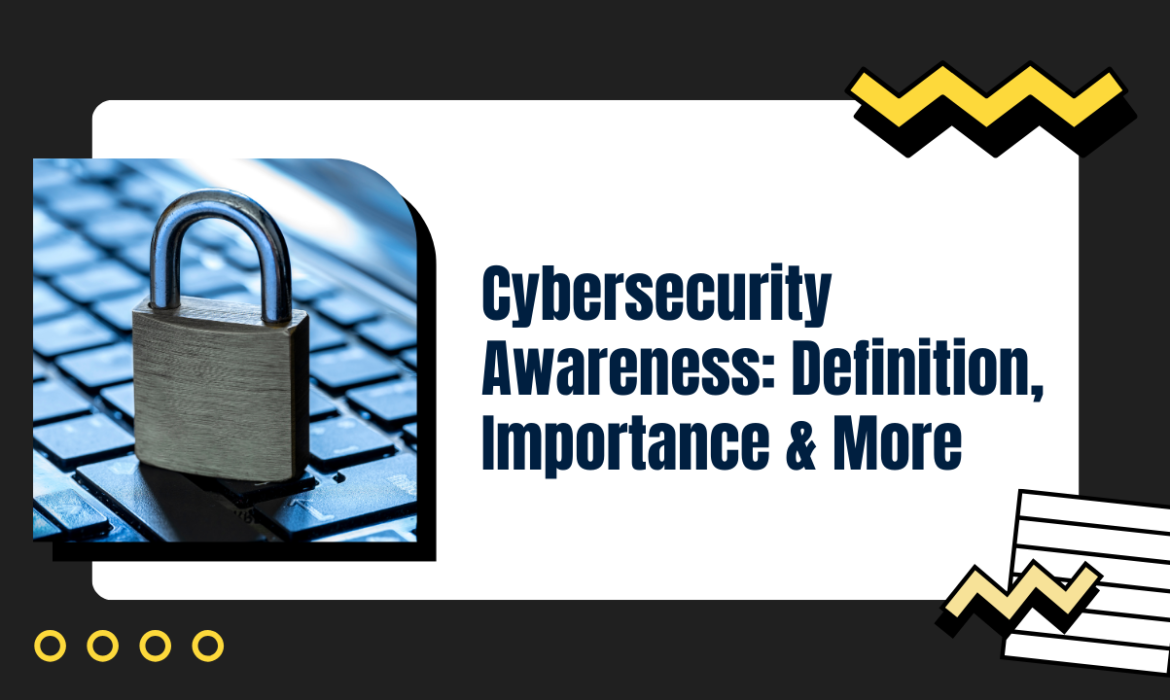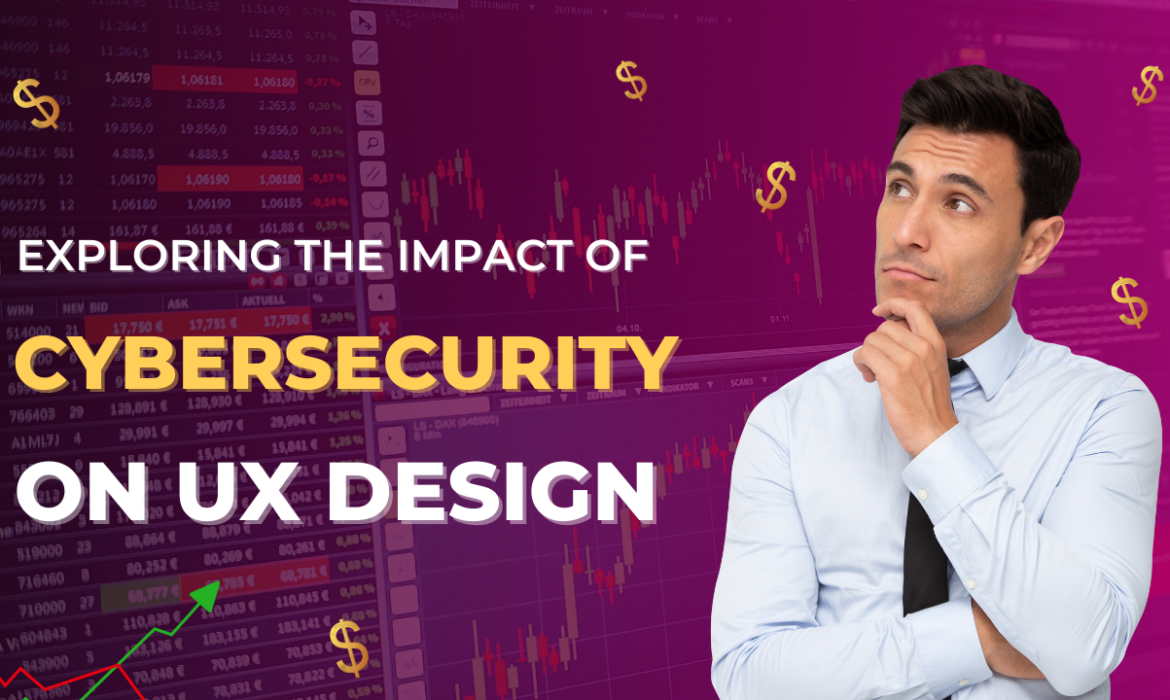Understanding the Types of Social Engineering Targeting Senior Officials
In today’s interconnected world, where information is power, cyberattacks have become increasingly sophisticated. Among the most insidious methods employed by malicious actors is social engineering, a psychological manipulation technique used to deceive individuals into divulging sensitive information or taking specific actions. Senior officials, with their access to valuable data and decision-making authority, are prime targets for social engineering attacks. In this comprehensive guide, we delve into the various types of social engineering tactics that malicious actors employ to target senior officials and how organizations can mitigate these risks effectively.
1. Phishing
Phishing remains one of the most prevalent forms of social engineering attacks targeting senior officials. Malicious actors craft emails, messages, or even phone calls designed to appear legitimate, often impersonating trusted entities such as colleagues, vendors, or government agencies. These communications typically contain urgent requests for sensitive information or prompt recipients to click on malicious links or download infected attachments. Senior officials, busy and frequently inundated with communications, may inadvertently fall prey to these deceptive tactics, compromising sensitive data or granting access to corporate networks.
2. Spear Phishing
Spear phishing takes the concept of phishing a step further by customizing attacks to specific individuals or organizations. Malicious actors conduct extensive research on their targets, gathering information from social media, corporate websites, and other publicly available sources to tailor their communications. By personalizing messages with relevant details, such as the target’s name, job title, or recent activities, spear phishing attacks can appear highly convincing and difficult to detect. Senior officials, with their prominent roles and access to valuable information, are particularly vulnerable to these targeted attacks.
Also Read: 2024 Cybersecurity Experts Predictions: Future of Digital Defense
3. CEO Fraud or Business Email Compromise (BEC)
CEO fraud, also known as business email compromise (BEC), involves impersonating high-ranking executives within an organization to deceive employees into transferring funds or sensitive information. Senior officials, including CEOs, CFOs, and other executives, are often the primary targets of these attacks due to their authority and access to financial resources. Malicious actors may use spoofed email addresses or compromised accounts to initiate fraudulent wire transfers, invoice payments, or other financial transactions, resulting in significant financial losses for organizations.
4. Pretexting
Pretexting involves creating a fabricated scenario or pretext to manipulate individuals into disclosing sensitive information or performing specific actions. Malicious actors may impersonate trusted individuals, such as IT personnel, government officials, or law enforcement officers, to gain the trust of their targets. Senior officials, with their responsibilities for organizational security and compliance, may be targeted with pretexting tactics aimed at extracting sensitive information, such as login credentials, financial data, or proprietary business intelligence.
5. Impersonation
Impersonation attacks involve masquerading as legitimate individuals or entities to deceive targets into taking specific actions. Malicious actors may impersonate senior officials, colleagues, or trusted vendors to gain access to sensitive information or corporate resources. These attacks often exploit trust relationships within organizations, leveraging familiarity and authority to manipulate targets into complying with fraudulent requests. Senior officials, with their visibility and influence within organizations, may be prime targets for impersonation attacks seeking to exploit their positions of authority.
Mitigating the Risks
Given the prevalence and sophistication of social engineering attacks targeting senior officials, organizations must implement robust security measures to mitigate these risks effectively. Some key strategies include:
- Employee Training and Awareness: Educate senior officials and employees about the various types of social engineering tactics, warning signs of potential attacks, and best practices for identifying and responding to suspicious communications.
- Multi-Factor Authentication (MFA): Implement multi-factor authentication mechanisms to enhance the security of sensitive accounts and systems, reducing the risk of unauthorized access resulting from compromised credentials.
- Email Filtering and Security Solutions: Deploy email filtering and security solutions capable of detecting and blocking phishing attempts, malicious attachments, and suspicious links before they reach recipients’ inboxes.
- Regular Security Assessments: Conduct regular security assessments, including penetration testing and vulnerability scanning, to identify and address potential weaknesses in organizational defenses and processes.
- Incident Response Planning: Develop comprehensive incident response plans outlining procedures for detecting, containing, and mitigating the impact of social engineering attacks. Ensure that senior officials and relevant stakeholders are aware of their roles and responsibilities in responding to security incidents effectively.
By implementing these proactive measures and fostering a culture of cybersecurity awareness within organizations, senior officials can better protect themselves and their organizations from the pervasive threat of social engineering attacks. In an increasingly interconnected and digitally dependent world, vigilance and preparedness are paramount to staying one step ahead of malicious actors and safeguarding sensitive information and assets.
Why managed detection and response is crucial for businesses in 2024 and beyond
Businesses today face an increasingly complex threat landscape with sophisticated cyberattacks that can lead to massive financial losses and reputational damage. In 2023 alone, the average cost of a data breach was over $4 million. As cybercriminals continue to refine their techniques, no organization is immune from cyber threats.
Managed detection and response (MDR) solutions provide 24/7 monitoring, detection, investigation, and response capabilities delivered by experienced security professionals and supported by advanced technologies. With the fast-paced evolution of the threat landscape, MDR has become an essential service for organizations of all sizes looking to bolster their security postures in 2024 and beyond.
Accelerated Digitization Has Expanded the Attack Surface
The rapid digitization brought on by the pandemic has led businesses to adopt cloud-based tools and enable remote work. While these trends have made organizations more agile and collaborative, they have also dramatically expanded the attack surface available for exploitation by hackers. Most businesses lack the internal resources to keep up with monitoring their entire hybrid IT environment around the clock.
Adding fuel to the fire, the global talent crunch has made it extremely difficult for organizations to recruit and retain skilled cybersecurity professionals. The cybersecurity skills gap is projected to reach 3.5 million unfilled positions by 2025. This is where MDR providers can help extend IT and security teams’ capabilities through specialist security analysts, threat intelligence, and advanced technologies.
Also Read: 2024 Cybersecurity Experts Predictions: Future of Digital Defense
Compliance Mandates Are Getting Stricter
Regulatory compliance is another key driver propelling the adoption of MDR solutions. Data protection and privacy regulations like GDPR, California’s CCPA, among others, have raised the stakes for non-compliance – both in terms of financial penalties as well as brand reputation.
Moreover, guidelines from industry bodies like the National Institute of Standards and Technology (NIST), ISO, and CERT are also evolving quickly to keep up with the threat landscape. MDR helps businesses adhere to compliance mandates through continuous security monitoring, implementation of appropriate controls, and creation of essential documentation.
MDR Empowers Businesses With Better Visibility, Expertise, and Faster Response
The core value proposition of an MDR solution lies in providing comprehensive visibility into the threat landscape, force multiplication through specialized security analysts, and significantly faster incident response.
MDR providers monitor an organization’s entire IT infrastructure including cloud, endpoints, networks, and apps using advanced sensors and threat intelligence feeds. Their security operations centers (SOCs) serve as an extension of clients’ internal security teams, allowing for around-the-clock vigilance at an affordable price point.
Research shows that MDR users save more than $3 million annually in cyber damages compared to companies without an MDR solution. Detect-to-respond times also reduce drastically from industry average of over 200 days to less than 60 minutes with MDR capabilities.
Key MDR Capabilities to Safeguard Businesses Now and In Future
Advanced Endpoint Monitoring and Response
Protecting endpoints has become paramount with the remote and hybrid work models. MDR solutions extend visibility and control across endpoints through advanced threat hunting, indicators of attack monitoring, automated response via security orchestration playbooks, and integration with other core security technologies.
Zero Trust Network Monitoring
The expanding remote attack surface calls for a zero trust approach across networks. MDR facilitates this by providing complete visibility into internal and external network traffic via flow logs. Expert analysts can quickly suspect foul play, backtrack network communication trails during threat hunting, and initiate tactical containment procedures.
Risk-based Vulnerability Management
MDR services help strengthen cyber resilience by identifying vulnerabilities across the expanded attack surface through frequent risk-based scans. Unique risk scoring allows clients to prioritize remediation based on criticality of assets and vulnerability exploitability rather than just relying on CVSS severity ratings.
Also Read: Why You Need a Security Architecture Assessment from Cyrcass?
Cloud Security Posture Management
MDR solutions help enforce tight security controls for cloud instances through built-in Security Posture Management (CSPM) capabilities or integrations with leading CSPM tools. This allows clients to fix misconfigurations, detect suspicious activities, compliance gaps or unsanctioned cloud apps, and enforce baseline policies across cloud environments.
Security Awareness and Training
Enhancing human readiness through continuous skill improvement is imperative for holistic cyber risk management. MDR providers incorporate security awareness and training focused on situational readiness to help employees across the business minimize human risk.
The Need for MDR Will Continue to Rise
Recent projections indicate the MDR market is likely to expand at a CAGR of nearly 19% through 2027, with more businesses waking up to its benefits. The demand will be especially high among companies struggling to monitor modern remote and cloud-centric environments.
While traditional security tools like antivirus suites, firewalls or intrusion detection systems continue to retain relevance, they are increasingly proving inadequate in tackling today’s multi-vector threats. MDR perfectly bridges this security gap for understaffed corporate security teams through expert human intelligence and state-of-the-art technologies.
As cyberspace becomes the new battlefield of the future, it is crucial for businesses to partner with competent MDR specialists that can serve as an around-the-clock cybersecurity force multiplier. MDR empowers organizations with resilience today and helps them maintain a robust security posture as the threatscape continues to intensify.
What is Managed Detection and Response (MDR)?
- Managed Detection and Response (MDR) is a cybersecurity service that provides continuous monitoring of an organization’s IT environment to detect and respond to security threats in real-time. It combines advanced technology with human expertise to identify, investigate, and mitigate security incidents.
How does Managed Detection and Response differ from traditional cybersecurity approaches?
- Unlike traditional cybersecurity solutions that focus primarily on prevention, Managed Detection and Response (MDR) takes a proactive approach by actively monitoring networks, endpoints, and systems for signs of compromise. MDR providers leverage advanced analytics, threat intelligence, and skilled analysts to detect and respond to threats faster and more effectively.
What are the key benefits of adopting Managed Detection and Response?
- Some key benefits of Managed Detection and Response include:
- Enhanced threat detection capabilities: MDR services use advanced analytics and machine learning to identify both known and unknown threats.
- Rapid incident response: MDR providers offer round-the-clock monitoring and response, reducing the time to detect and mitigate security incidents.
- Access to expert cybersecurity talent: MDR services provide access to skilled security analysts who can help organizations navigate complex threats and respond effectively.
- Cost-effectiveness: By outsourcing cybersecurity monitoring and response to MDR providers, organizations can often reduce the costs associated with maintaining an in-house security team and infrastructure.
What types of organizations can benefit from Managed Detection and Response?
- Managed Detection and Response (MDR) is suitable for organizations of all sizes and across various industries. However, it is particularly beneficial for businesses that lack the resources or expertise to effectively manage their cybersecurity posture internally. Additionally, industries with stringent compliance requirements, such as healthcare, finance, and government, can benefit from the continuous monitoring and rapid incident response capabilities offered by MDR services.
How does Managed Detection and Response complement existing security measures?
- Managed Detection and Response (MDR) augments existing security measures by providing an additional layer of defense against advanced threats. It works alongside other cybersecurity technologies such as firewalls, antivirus software, and intrusion detection systems to provide comprehensive protection. MDR enhances visibility into the organization’s IT environment, detects threats that may evade traditional security controls, and helps organizations respond quickly to mitigate potential damage.
2024 Cybersecurity Experts Predictions: Future of Digital Defense
In the ever-evolving landscape of cyberspace, staying ahead of the curve is paramount. As we step into 2024, the role of cybersecurity has become more crucial than ever. Cyber threats continue to grow in sophistication, making it imperative for experts to anticipate and adapt to emerging challenges. In this blog post, we delve into the predictions of Green Edge Computers cybersecurity experts for 2024, exploring the trends, technologies, and strategies that will shape the digital defense landscape.
1. Rise of AI and Machine Learning in Cybersecurity
Cybersecurity experts predict an increased reliance on artificial intelligence (AI) and machine learning (ML) to bolster defense mechanisms. As cyber threats become more intricate, AI-driven solutions will play a pivotal role in identifying patterns, anomalies, and potential vulnerabilities. Machine learning algorithms will evolve to better anticipate and respond to cyberattacks in real-time, providing organizations with a proactive defense strategy.
2. Quantum Threats and Quantum-Safe Cryptography
As quantum computing advances, cybersecurity experts anticipate a corresponding rise in quantum threats. Quantum computers have the potential to break traditional cryptographic algorithms, posing a significant risk to data security. In response, the focus will shift towards implementing quantum-safe cryptographic techniques to safeguard sensitive information. The race to develop quantum-resistant algorithms will intensify as organizations prepare for the quantum era.
3. Cybersecurity Skills Shortage Mitigation
The shortage of skilled cybersecurity professionals is a persistent challenge. Experts predict a surge in efforts to address this gap through training programs, certifications, and educational initiatives. Organizations will invest in upskilling existing personnel and fostering a cybersecurity-aware culture within their workforce. Collaborative efforts between academia, industry, and government will be essential to cultivate the next generation of cybersecurity experts.
4. Increased Emphasis on Zero Trust Architecture
The traditional perimeter-based security model is becoming obsolete in the face of advanced threats. Cybersecurity experts foresee a widespread adoption of the Zero Trust Architecture, where trust is never assumed, and verification is required from everyone trying to access resources within the network. This approach aims to minimize the attack surface and enhance overall security posture by implementing strict access controls and continuous monitoring.
5. Integration of DevSecOps for Enhanced Security
With the growing trend of DevOps practices, cybersecurity experts predict a greater integration of security into the development process—giving rise to DevSecOps. This proactive approach ensures that security is an integral part of the software development lifecycle, rather than a retrospective addition. By embedding security practices throughout the development pipeline, organizations can identify and rectify vulnerabilities early in the process, reducing the risk of potential breaches.
6. Evolving Threat Landscape in Cloud Security
As organizations increasingly migrate to the cloud, cybersecurity experts anticipate a corresponding shift in the threat landscape. Cloud security will become a primary focus, with an emphasis on securing cloud-native applications and infrastructure. Container security, serverless architectures, and API vulnerabilities will be areas of concern, prompting the development of specialized tools and frameworks to mitigate cloud-specific risks.
7. Enhanced Focus on Endpoint Security
With the rise of remote work and the proliferation of connected devices, endpoint security will take center stage in 2024. Cybersecurity experts predict a surge in attacks targeting endpoints, making robust endpoint protection crucial for organizations. Continuous monitoring, threat detection, and response mechanisms will be integral components of a comprehensive endpoint security strategy.
8. Heightened Regulatory Compliance Requirements
The regulatory landscape for cybersecurity is evolving rapidly. Experts anticipate an increase in regulatory compliance requirements as governments worldwide seek to strengthen data protection measures. Organizations will need to adapt to changing compliance frameworks, with a particular focus on privacy regulations and measures to protect sensitive data.
9. Cybersecurity Automation for Rapid Response
Automation will continue to be a key theme in 2024, with cybersecurity experts predicting increased adoption of automated response mechanisms. Security orchestration and automated incident response (SOAR) tools will play a pivotal role in enabling organizations to respond swiftly to cyber threats, minimizing the impact of attacks and reducing manual intervention.
10. Collaboration and Information Sharing
In the face of sophisticated cyber threats, collaboration and information sharing among organizations and cybersecurity professionals will be paramount. Experts predict increased cooperation between private and public sectors, as well as across industries, to collectively strengthen global cybersecurity defenses. Threat intelligence sharing and collaborative efforts to combat cybercrime will be essential components of a unified defense strategy.
In conclusion, 2024 promises to be a dynamic year for cybersecurity, marked by technological advancements, evolving threat landscapes, and a collective effort to address challenges. Cybersecurity experts emphasize the importance of proactive measures, collaborative approaches, and staying abreast of emerging trends to effectively navigate the complex and ever-changing digital defense landscape. As organizations and individuals alike gear up for the challenges ahead, a forward-thinking and adaptive cybersecurity strategy will be key to ensuring a secure digital future. Contact us at Green Edge Computers to know more.
How to Choose the Best Cybersecurity Consultant in UAE?
In the ever-evolving landscape of the digital world, where technological advancements open new avenues, there is a parallel surge in cyber threats that can compromise sensitive information and disrupt operations. The United Arab Emirates (UAE), being a hub of innovation and technology, is not immune to these challenges. As businesses and individuals embrace the digital age, the role of a cybersecurity consultant becomes paramount in fortifying the digital fortress. In this blog, we will delve into the significance of cybersecurity consultants in the UAE, exploring their responsibilities, challenges, and the evolving cybersecurity landscape in the region.
The Growing Need for Cybersecurity Consultants:
The UAE, with its rapid digital transformation and a flourishing tech ecosystem, has become a prime target for cybercriminals seeking to exploit vulnerabilities. From financial institutions to government entities and small businesses, all entities are potential victims. This escalating threat landscape underscores the critical need for cybersecurity consultants who can safeguard digital assets, maintain data integrity, and ensure business continuity.
Also Read: Why You Need a Security Architecture Assessment from Cyrcass?
Roles and Responsibilities:
Cybersecurity consultants play a multifaceted role in the UAE’s digital defense. Their responsibilities extend beyond implementing firewalls and antivirus software. Here are some key aspects of their roles:
- Risk Assessment: Conducting comprehensive risk assessments to identify potential vulnerabilities and threats specific to the UAE’s digital infrastructure. This involves analyzing existing security measures and proposing enhancements to mitigate risks.
- Security Infrastructure Design and Implementation: Designing robust cybersecurity frameworks tailored to the unique needs of businesses in the UAE. This includes implementing state-of-the-art security measures such as intrusion detection systems, encryption protocols, and secure access controls.
- Incident Response and Management: Developing and implementing incident response plans to efficiently address and mitigate cybersecurity incidents. This includes coordinating with relevant stakeholders, analyzing the root cause of incidents, and implementing measures to prevent recurrence.
- Security Awareness Training: Conducting training programs to enhance the cybersecurity awareness of employees within organizations. This proactive approach helps in creating a security-conscious culture and reduces the likelihood of human error leading to security breaches.
Challenges in the UAE Cybersecurity Landscape:
While the UAE is at the forefront of technological innovation, it also faces unique challenges in the realm of cybersecurity:
- Rapid Technological Adoption: The fast-paced adoption of emerging technologies, such as artificial intelligence, cloud computing, and the Internet of Things (IoT), creates new attack vectors for cybercriminals. Cybersecurity consultants must stay abreast of these developments to effectively counter potential threats.
- Diverse Business Landscape: The UAE’s diverse business ecosystem, encompassing industries from finance to healthcare and energy, requires cybersecurity consultants to have a deep understanding of sector-specific threats and regulatory compliance.
- Global Connectivity: The UAE’s status as a global business hub increases its exposure to cyber threats originating from around the world. Cybersecurity consultants must navigate this interconnected landscape to secure digital assets effectively.
- Regulatory Compliance: The UAE government has implemented stringent cybersecurity regulations to protect critical infrastructure and sensitive data. Navigating this regulatory landscape while ensuring compliance is a significant challenge for cybersecurity consultants.
The Evolving Landscape:
As cyber threats continue to evolve, so does the role of cybersecurity consultants. In recent years, the UAE has witnessed advancements in cybersecurity practices and initiatives:
- Collaboration with Government Initiatives: Cybersecurity consultants in the UAE often collaborate with government agencies to align their strategies with national cybersecurity initiatives. This collaboration strengthens the overall cybersecurity posture of the country.
- Emphasis on Talent Development: Recognizing the shortage of skilled cybersecurity professionals, there has been a concerted effort to develop local talent. Training programs and initiatives aim to build a robust pool of cybersecurity experts within the country.
- Integration of Artificial Intelligence: The integration of artificial intelligence (AI) and machine learning (ML) in cybersecurity solutions is gaining prominence. Cybersecurity consultants in the UAE are leveraging these technologies to enhance threat detection and response capabilities.
Conclusion:
In the digital age, where the UAE stands as a beacon of technological progress, the role of a cybersecurity consultant is pivotal. As businesses and individuals navigate the complexities of the digital landscape, the expertise of these consultants becomes indispensable. By understanding the unique challenges posed by the UAE’s digital ecosystem, cybersecurity consultants play a crucial role in fortifying the nation’s digital defenses, ensuring a secure and resilient future for all. Contact us at Green Edge Computers to know more.
Why You Need a Security Architecture Assessment from CyRAACS?
In the ever-evolving landscape of cybersecurity threats, businesses and organizations find themselves in a constant battle to protect their valuable assets from malicious actors. With the increasing sophistication of cyber-attacks, having a robust security architecture is no longer a luxury but a necessity. This is where a Security Architecture Assessment from CyRAACS becomes indispensable.
Understanding the Need for Security Architecture Assessment:
The digital age has ushered in unprecedented convenience and connectivity, but it has also exposed organizations to a myriad of security challenges. Cybercriminals are relentless in their pursuit of exploiting vulnerabilities and compromising sensitive information. A Security Architecture Assessment acts as a strategic checkpoint, evaluating and fortifying an organization’s defenses against potential threats.
1. Identifying Vulnerabilities:
One of the primary reasons to opt for a Security Architecture Assessment is to identify vulnerabilities in your existing infrastructure. CyRAACS employs state-of-the-art tools and methodologies to conduct a comprehensive analysis of your security architecture. By pinpointing weak points and potential entryways for cyber threats, the assessment enables organizations to proactively address these issues before they can be exploited.
Also Read: Digital Safety Nets: Exploring the Impact of Cybersecurity on UX Design
2. Tailored Solutions for Your Organization:
Every organization is unique, with its own set of assets, operations, and potential risks. A generic, one-size-fits-all security solution may not be effective. CyRAACS understands this and tailors its Security Architecture Assessments to the specific needs of each client. Whether it’s a financial institution, a healthcare provider, or a manufacturing unit, the assessment is customized to address the industry-specific challenges and compliance requirements.
Also Read: Cybersecurity Services : Definition, Importance & More
3. Regulatory Compliance:
Compliance with industry regulations is non-negotiable for many businesses. Failing to meet these standards not only exposes organizations to legal repercussions but also puts their reputation on the line. CyRAACS specializes in aligning security architecture with regulatory requirements. A Security Architecture Assessment from CyRAACS ensures that your organization not only meets current compliance standards but is also prepared for future changes in regulations.
4. Proactive Threat Mitigation:
Cyber threats are dynamic and constantly evolving. Relying on reactive measures is no longer sufficient. A Security Architecture Assessment empowers organizations to adopt a proactive approach to threat mitigation. By identifying potential risks before they materialize into actual threats, CyRAACS helps organizations stay one step ahead of cybercriminals.
5. Safeguarding Intellectual Property:
For many organizations, intellectual property is their most valuable asset. Protecting trade secrets, proprietary algorithms, and other intellectual assets is crucial for maintaining a competitive edge. CyRAACS not only identifies vulnerabilities in the technical infrastructure but also assesses the policies and procedures in place for safeguarding intellectual property, providing a holistic approach to security.
6. Enhancing Incident Response Capabilities:
No security architecture can claim to be foolproof. In the unfortunate event of a security breach, having robust incident response capabilities is paramount. CyRAACS not only identifies weaknesses in the current incident response plan but also provides recommendations to enhance the organization’s ability to detect, respond, and recover from security incidents.
7. Cost-Effective Risk Management:
Investing in a Security Architecture Assessment is a proactive measure that ultimately saves organizations from potential financial losses associated with security breaches. The cost of a security breach, both in terms of direct financial losses and reputational damage, can far exceed the investment in a comprehensive assessment. CyRAACS ensures that the assessment process is not just a cost but an investment in the long-term security and sustainability of the organization.
8. Technology Evolution and Integration:
The rapid pace of technological advancement necessitates a constant evaluation of security measures. New technologies bring new opportunities, but they also introduce new risks. A Security Architecture Assessment from CyRAACS evaluates the compatibility and security implications of integrating new technologies into the existing infrastructure, ensuring that organizations can leverage innovation without compromising security.
Conclusion:
In an era where the digital realm is both a boon and a potential threat, organizations must be vigilant in safeguarding their digital fortresses. A Security Architecture Assessment from CyRAACS is not just a recommended step; it’s a proactive strategy for securing your organization against the ever-evolving landscape of cyber threats. By identifying vulnerabilities, tailoring solutions, ensuring regulatory compliance, and fostering a proactive approach to security, CyRAACS empowers organizations to fortify their defenses and navigate the digital landscape with confidence. Don’t wait for a cyber-attack to happen – invest in the security of your organization today with CyRAACS. Contact us at Green Edge Computers to know more.
Cybersecurity Services : Definition, Importance & More
Cybersecurity Services : In an era dominated by technology, where our lives are intricately woven into the digital fabric, the importance of cybersecurity has never been more pronounced. Cyber threats loom large, posing risks to individuals, businesses, and even nations. In this digital landscape, being aware of cybersecurity is not just a choice; it’s a necessity. This blog delves into the definition, importance, and various facets of cybersecurity awareness.
Defining Cybersecurity Services Awareness
At its core, cybersecurity awareness is the understanding and knowledge of the potential risks and threats in the digital realm. It involves being cognizant of the various forms of cyber attacks, the vulnerabilities they exploit, and the measures to mitigate these risks. It extends beyond just knowing about the existence of cyber threats; it encompasses a proactive approach to safeguarding digital assets and personal information.
To be cybersecurity aware means to recognize the value of digital information, understanding the potential consequences of a security breach, and actively participating in the protection of oneself and others against cyber threats.
Also Read: Digital Safety Nets: Exploring the Impact of Cybersecurity on UX Design
Importance of Cybersecurity Services
- Protection of Personal Information: In an age where personal data is a prized commodity, cybersecurity awareness is crucial for safeguarding sensitive information. Individuals need to be aware of phishing attempts, social engineering tactics, and other methods cybercriminals use to gain unauthorized access to personal data.
- Financial Security: Online banking, shopping, and financial transactions are an integral part of our lives. Cybersecurity awareness is essential to prevent financial fraud, identity theft, and other cybercrimes that can result in substantial financial losses.
- Business Continuity: For businesses, the stakes are even higher. Cybersecurity threats can disrupt operations, lead to data breaches, and damage a company’s reputation. Employees who are cybersecurity aware contribute to a more robust defense against cyber attacks, thereby ensuring business continuity.
- National Security: In the interconnected world we live in, cyber threats can have severe consequences at a national level. Governments and organizations must foster cybersecurity awareness to protect critical infrastructure, sensitive data, and national security interests.
- Mitigating Cyber Attacks: Cyber threats are continually evolving, and new attack vectors emerge regularly. Cybersecurity awareness equips individuals and organizations with the knowledge to identify and mitigate these threats, reducing the overall risk of successful cyber attacks.
Elements of Cybersecurity Services
- Education and Training: Cybersecurity awareness begins with education. Individuals should be educated on the various types of cyber threats, common attack methods, and best practices for protecting their digital assets. Regular training sessions can keep individuals updated on the latest cybersecurity trends.
- Password Security: One of the simplest yet most effective measures in cybersecurity is strong password management. Individuals should be aware of the importance of using unique, complex passwords and implementing two-factor authentication to add an extra layer of security.
- Phishing Awareness: Phishing remains one of the most prevalent cyber threats. Recognizing phishing attempts and avoiding clicking on suspicious links or providing sensitive information is a fundamental aspect of cybersecurity awareness.
- Device Security: As our dependence on smartphones, tablets, and computers increases, so does the need for securing these devices. Cybersecurity awareness involves keeping devices updated with the latest security patches, using reputable security software, and being cautious about downloading apps or software from untrusted sources.
- Social Media Vigilance: Social media platforms are not only a source of connection but also a potential breeding ground for cyber threats. Being aware of privacy settings, recognizing social engineering tactics, and avoiding oversharing personal information contribute to a more secure online presence.
Promoting a Cybersecurity Services
Creating a culture of cybersecurity is essential for long-term resilience against cyber threats. This involves fostering a mindset where cybersecurity is not just an IT department’s responsibility but a shared commitment across all levels of an organization or community.
- Leadership Involvement: Leadership plays a crucial role in setting the tone for cybersecurity awareness. When leaders prioritize and actively participate in cybersecurity initiatives, it sends a powerful message throughout the organization.
- Regular Awareness Campaigns: Periodic cybersecurity awareness campaigns can serve as a reminder for individuals to remain vigilant. These campaigns can include workshops, webinars, and informational materials that highlight the latest cyber threats and preventive measures.
- Incident Response Training: Being cybersecurity aware also involves knowing what to do in the event of a security incident. Conducting regular incident response drills helps individuals and organizations practice their response to a cyber attack, minimizing the impact of potential breaches.
- Encouraging Reporting: Establishing a reporting mechanism for suspicious activities or potential security incidents encourages a proactive approach to cybersecurity. Individuals should feel empowered to report any anomalies without fear of reprisal.
Conclusion
In a world driven by technology, where the digital landscape is constantly evolving, cybersecurity awareness is not just a buzzword; it’s a shield against the myriad cyber threats that lurk in the shadows. From protecting personal information to safeguarding national interests, the importance of being cybersecurity aware cannot be overstated. As individuals, businesses, and nations navigate the complexities of the digital age, investing in cybersecurity awareness is an investment in a safer and more secure future. Contact us at Green Edge Computers to know more.
Digital Safety Nets: Exploring the Impact of Cybersecurity on UX Design
Digital Safety: In today’s rapidly evolving digital landscape, where technology seamlessly intertwines with our daily lives, the importance of cybersecurity cannot be overstated. As we navigate the vast virtual realm, the fusion of user experience (UX) design and cybersecurity emerges as a critical aspect of ensuring a secure and enjoyable online environment.
The Intersection of Cybersecurity and UX Design
UX design is fundamentally centered on enhancing user satisfaction and usability. However, in the age of increasing cyber threats, designers must also prioritize security without compromising the user experience. Striking the right balance is crucial, as a poorly designed security system can lead to frustration and potential vulnerabilities.
User-Centric Security Measures for Digital Safety
Effective cybersecurity in UX design involves implementing user-centric security measures. This includes seamless authentication processes, clear communication of security protocols, and unobtrusive yet robust protection mechanisms. Users should feel secure without being bogged down by complex security layers. Cybersecurity companies in UAE can better guide you in matters like these. You can contact us at Green Edge Computers to know more.
Enhancing Trust Through Design
Trust is the cornerstone of any successful digital interaction. UX designers are pivotal in fostering trust by creating interfaces that communicate security effectively. From intuitive password management systems to transparent data encryption processes, each element contributes to building user confidence in the platform.
Also Read: Top Cybersecurity Trends 2024 You Need to Know
Balancing Security and Convenience
One of the challenges UX designers face is finding the delicate balance between security and convenience. Stricter security measures often result in additional steps for users, potentially impacting the overall experience. Innovations in biometric authentication, adaptive security models, and advanced encryption technologies aim to mitigate this challenge.
The Evolving Threat Landscape
As cyber threats evolve, so must UX design strategies. Designers need to stay abreast of the latest cybersecurity trends and integrate adaptive features that can respond to emerging threats. Regular updates and user education become essential components in this ever-changing landscape.
Also Read: Mitigating Cybersecurity Risks In Business Communications
Educating Users on Digital Hygiene
UX design can also contribute to cybersecurity by educating users on digital hygiene. Incorporating user-friendly tips and guides within the interface can empower individuals to make informed decisions regarding their online behavior, reducing the risk of falling victim to cyber-attacks.
Conclusion: Harmonizing Security and User Experience
Digital Safety : The challenge lies in harmonizing security measures with a seamless user experience in the symbiotic relationship between cybersecurity and UX design. Designers must continually innovate to stay ahead of cyber threats while ensuring that users feel empowered and secure in their digital interactions. By prioritizing both aspects, we can construct a digital landscape that not only delights users but also safeguards their digital well-being.

